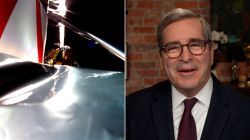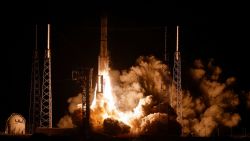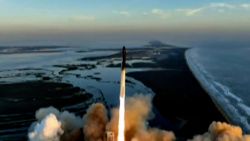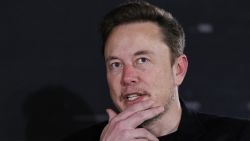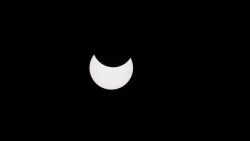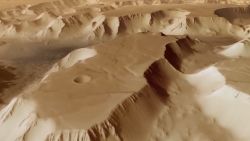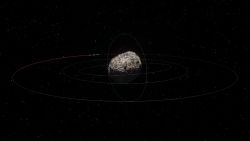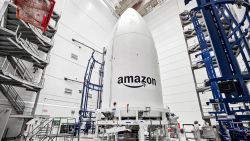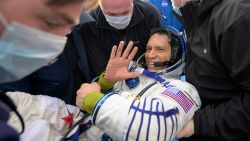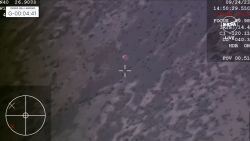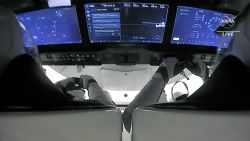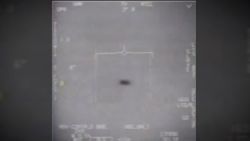SpaceX’s Crew Dragon spacecraft — carrying NASA astronauts Robert Behnken and Douglas Hurley — splashed down into the Gulf of Mexico on Sunday, marking a safe end to an historic two-month mission and paving the way for the United States to once again become a world leader in human spaceflight.
The Crew Dragon vehicle fired up its engines and safely plunged back through the Earth’s thick atmosphere on Sunday afternoon before deploying parachutes and slowing the vehicle down for its target landing off the coast of Florida. Their mission to the International Space Station marked the first crewed spaceflight to launch from the United States since the Space Shuttle program retired in 2011. It was also the first time in history that a commercially developed spacecraft carried humans into Earth’s orbit.
Mission control dispatched a humorous welcome to the astronauts: “Thank you for flying SpaceX.”
Hurley and Behnken made their first post-splashdown public appearance after they were shuttled by helicopter, then airplane, to Houston, Texas, where the astronauts greeted their families.
The men sat to address the public during a media event streamed on NASA TV: “We’re not gonna stand right now,” Hurley told an audience at a landing strip near Johnson Space Center.
“For those of you who have done this before,” he said, referring to the arduous trip home from space, “you know, it’s not pleasant standing for a few hours after you get back.”
Behnken also thanked the leaders of NASA’s Commercial Crew Program, including Kathy Lueders, the longtime program head who was recently promoted to NASA’s head of human spaceflight. He also thanked SpaceX CEO Elon Musk, who flew into Houston to greet the astronauts after watching their return to Earth from SpaceX’s mission control in Hawthorne, California.
A visibly emotional Musk later remarked, “this is the result of an incredible, incredible amount of work from people at SpaceX, people at NASA,” Musk said.
“This has been 18 years to, to finally fly,” he said, referring to the 18 years of SpaceX’s operation, during which it has flown dozens of satellites to orbit, but never humans.
The successful return of two NASA astronauts aboard a SpaceX capsule marked the culmination of a decade-long, and occasionally contentious, partnership between the space agency and Musk’s hard-charging rocket company.
NASA tapped SpaceX and Boeing in 2014 to build vehicles capable of ferrying astronauts to and from the International Space Station. The two companies were awarded fixed-price contracts worth $2.6 billion and $4.2 billion respectively, and both spacecraft were years overdue. But SpaceX beat Boeing to the launch pad.
SpaceX’s Crew Dragon was cleared for flight in May, and Behnken and Hurley took off aboard their spacecraft, nicknamed Dragon Endeavour, as millions watched. The pair spent two months aboard the space station before beginning their return trip home Saturday.
Their return trip was made more dramatic by a two-day standoff with mother nature: Tropical Storm Isaias was barreling toward the east coast. But waters in the Gulf of Mexico remained calm enough for the astronauts’ capsule to splash down near Pensacola.
A herd of unidentified boats that could be seen swarming around Crew Dragon shortly after splashdown were not invited guests, NASA Administrator Jim Bridenstine said during a post-splashdown press conference.
The Coast Guard was supposed to keep a large swath of ocean around the landing site clear, but Bridenstine said that after splashdown, some boats made a “beeline” for the capsule. He added that NASA “could have done better” and will likely need to deploy additional traffic control on future missions.
In a statement issued Sunday evening, a spokesperson for the Coast Guard’s Eighth Coast Guard District said they “worked closely with NASA and SpaceX to plan the recovery of the Dragon crew in a way that prioritized the safety of the boating public and those involved in the recovery operations.”
The boats encroached on the recovery operation before the spacecraft was determined to be emitting small amounts of NTO, or nitrogen tetroxide, a potentially toxic propellant used in the capsule’s onboard rocket engines.
NASA officials said the fumes were not potent enough to be harmful to humans, but it sparked concerns about how and why privately owned watercraft were able to gain such close proximity to a sensitive astronaut recovery effort.
The Coast Guard said in its statement that the SpaceX capsule splashed down in an area that was outside its legal authority to patrol.
“With limited assets available and with no formal authority to establish zones that would stop boaters from entering the area, numerous boaters ignored the Coast Guard crews’ requests and decided to encroach the area, putting themselves and those involved in the operation in potential danger,” the statement said.
Despite the oddities, NASA and SpaceX celebrated the historic Bhenken and Hurley’s safe return.
Their mission was technically considered a test flight, but Hurley and Behnken’s safe return paves the way for NASA to officially certify Crew Dragon as a human-rated spacecraft. That queues up the vehicle to begin flying regular trips to the ISS, allowing NASA to take more control over US operations on the giant orbiting laboratory after years of relying on Russian spacecraft to fly crew.
Another Crew Dragon spacecraft is already preparing to launch another mission, dubbed Crew-1, that will carry four more astronauts to the space station: NASA astronauts Victor Glover, Michael Hopkins, Shannon Walker and Japan’s Soichi Noguchi.
SpaceX also plans to refurbish Hurley and Behnken’s spacecraft, which is nicknamed Endeavour, to fly on another crewed mission in the spring of 2021.
That trip will include Megan McArthur — Behnken’s wife and fellow astronaut — along with NASA’s Shane Kimbrough, Akihiko Hoshide with Japan’s JAXA space agency and Thomas Pesquet of the European Space Agency.
NASA has been working to returning human spaceflight to US soil for nearly a decade: It lost that capability after retiring the Space Shuttle program in 2011. And at the time, few people at NASA expected Elon Musk’s scrappy rocket startup would be the organization that brought crewed launches back to US soil.
NASA’s decision not to create its own replacement for the Shuttle — but to contract that task out to commercial companies — was hugely controversial in the early 2010s.
The program, called Commercial Crew, sought to spur innovation and encouraged corporations to compete to bring down costs. In 2014. NASA awarded two contracts: $4.2 billion to Boeing to build its Starliner vehicle, and $2.6 billion to SpaceX, which planned to create a crew worthy version of the Dragon spacecraft that was already flying cargo to and from the International Space Station.
Boeing, a longtime NASA partner that has worked on numerous human spaceflight programs, recently suffered a significant setback when a Starliner capsule malfunctioned during a key uncrewed test flight. NASA had repeatedly signaled that it expected Boeing to beat SpaceX to the launch pad. That changed after SpaceX soared through the final tests of its Crew Dragon capsule and readied for its historic launch in May.
SpaceX’s success is a major win for NASA, which has been pushing for more commercial partnerships and can use this program’s success as evidence that it’s an effective contracting method.



